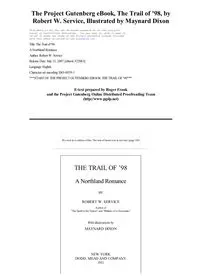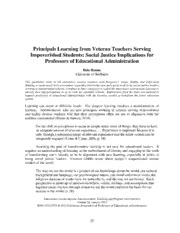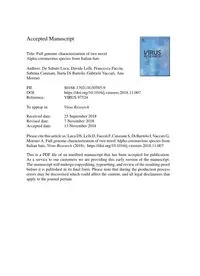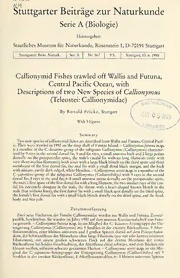
Callionymid fishes trawled off Wallis and Futuna, Central Pacific Ocean, with descriptions of two new species of Callionymus (Teleostei: Callionymidae) PDF
Preview Callionymid fishes trawled off Wallis and Futuna, Central Pacific Ocean, with descriptions of two new species of Callionymus (Teleostei: Callionymidae)
Stuttgarter Beiträge zur Naturkunde A Serie (Biologie) Herausgeber: Staatliches Museum für Naturkunde, Rosenstein 1, D-70191 Stuttgart StuttgarterBeitr. Naturk. Ser. A Nr. 567 9S. Stuttgart, 15.6. 1998 Callionymid Fishes trawled off Wallis and Futuna, Central Pacific Ocean, with New Descriptions of two Species of Callionymus (Teleostei: Callionymidae) ^r By Ronald Fricke, Stuttgart With 3 figures Summary TwonewspeciesofcallionymidfishesaredescribedfromWallisandFutuna,CentralPacif- ic.Theyweretrawled in 1992 on thedeep shelfofFutuna Island.- Callionymusfutuna n.sp. is a member ofthe C-kaianus-group ofthe subgenus Callionymus (Callionymus) character- ized by9 rays intheseconddorsalfin, 9 analfinrays,asmallantrorsebarband2 largepoints dorsally on the preopercular spine, the male's caudal fin without long filaments (only with veryshortmedianfilaments),bothsexeswithalargeblackblotchonthethirdspineandthird membrane of the first dorsal fin, the anal fin with a small distal black margin, and the back withminute,partlydark-edged,whiteblotches.-Callionymusseretin.sp.is amemberofthe C-japonicus-group of the subgenus Callionymus (Calliurichthys) with 9 rays in the second dorsalfin, 8 rays intheanalfin, 6-8 small antrorse serrae dorsally onthepreopercularspine, themale'sfirstspineofthefirstdorsalfinwithalongfilament,thetwomedianraysofthecau- dal fin extremely elongate in the male, the throat with a heart-shaped brown blotch in the male(butwithoutlines),thefirstdorsalfinwithasmallblackspotdistallyonthethirdspine, thefemale'sfirstdorsalfinwith asmall blackblotchdistallyonthethirdspine, andthe head, body andfins pale. Zusammenfassung Zwei neue Fischarten der Familie Callionymidae werden aus Wallis und Futuna, Zentral- pazifik, beschrieben. SiewurdenimJahre 1992 aufdemunteren KontinentalschelfvonFutu- nagetrawlt.-Callionymusfutunan.sp.isteinMitgliedder C.-kaianus-ArtengruppederUn- tergattung Callionymus (Callionymus) mit 9 Strahlen in der zweiten Rückenflosse, 9 After- flossenstrahlen, einer kleinen antrorsen und 2 großen Spitzen dorsal auf dem Präoperkular- dorn,derSchwanzflossedesMännchensohnelangeFilamente(nurmitsehrkurzenmittleren Filamenten), mit einem großen schwarzen Fleck auf der dritten Membran der ersten Rückenflosse bei beiden Geschlechtern, derAfterflosse distal schwarz, und dem Rückenmit kleinenweißen, teilweise schwarz gesäumten Flecken. - Callionymusseretin.sp. ist ein Mit- glied der C-japonicus-Artengruppe der Untergattung Callionymus (Calliurichthys) mit 9 Strahlen in der zweiten Rückenflosse, 8 Afterflossenstrahlen, 6-8 kleinen antrorsen Spitzen 2 STUTTGARTERBEITRÄGE ZURNATURKUNDE Sei".A,Nr. 567 dorsal aufdem Präoperkulardorn, derersten Rückenflosse des Männchens mit einem langen Filament, den mittleren beiden Schwanzflossenstrahlen des Männchens stark verlängert, der Kehle des Männchens mit einem braunen Fleck, aber ohne Linien, der ersten Rückenflosse beimMännchenmiteinemkleinenschwarzenFleckdistalaufdemdrittenStrahl,beimWeib- chen miteinemschwarzenFleckaufdemdrittenStrahlundTeilenderzweitenMembrander erstenRückenflosse, sowie Kopf, KörperundFlossen blaß, ohneZeichnung. Contents 1. Introduction 2 2. Methods, materials and acknowledgments 2 3. Keytospecies ofCallionymusfromWallis andFutunaarea 2 4. Species descriptions 3 4.1. Callionymusfutuna n.sp 3 4.2. Callionymusseretin.sp 6 5. References 9 1. Introduction The Callionymidae are a group of benthic fishes living on sand, mud or gravel bottoms of the upper 900 m of tropical, subtropical and temperate oceans. The In- do-Pacific species ofthefamily have beenrevised byFricke (1983),who did not re- porta single speciesfromWallis andFutuna; subsequently, Fricke (1993) published arevision ofthe Callionymidae ofNew Caledonia. In 1992, several callionymid fish specimens were trawled on the shelf of Futuna Island, Wallis and Futuna, Central Pacific. The material from Wallis and Futuna comprises two species hitherto unknown to science, which are described in the present paper. 2.Methods,materials and acknowledgments Methods followFricke(1993).Thestandardlengthis abbreviatedas "SL."Theabbrevi- ation "Ma"means "Millionyears beforepresent." The dataoftheparatypes are giveninpa- rentheses ifapplicable. Materials: The type materials are deposited in the Museum National d'Histoire Natu- relle, Paris (MNHN), andintheStaatliches MuseumfürNaturkunde Stuttgart(SMNS). Acknowledgments: TheauthorwouldliketothankDr. B. Seret(MNHN),whomade thecallionymidfishspecimensfromWallisandFutunaaccessibletotheauthorofthepresent paper, anddonatedtwoparatypes. 3. Keytospecies oftheCallionymidaefromWallis and Futuna area la Preopercularspinedorsallywithasmallantrorsebarbandtwolarge,curvedpoints;caudal finnormal,medianraysnotelongate,caudalfinnotlongerthanprepectoralfinlength;anal findistally black Callionymusfutunan.sp. lbPreopercularspinedorsallywith6-8minuteantrorseserrae,butwithoutlargepoints;two median caudal fin rays extremely elongate in males, may be longer than SL; anal fin pale Callionymusseretin.sp. FRICKE, CALLIONYMID FISHESFROMWALLISAND FUTUNA 4. Species descriptions 4.1. Callionymus futuna n.sp. (Fig. 1) Material Total: 4 specimens. Holotype: MNHN 1995-521, male, 78.9 mm SL, Futuna Island shelf, 14°13'30"S 178P°a1r0a't1y8"pWe,s:22M4-N25H2Nm1d9e9p5t-h5,22B,. 1Semraelte,,C7r4.u2ismemM7S,L,Sta.nCdP1 5f1e5m,al1e2,M69a.y4m19m92S.L,FutunaIs- Mlaanyd s1h9e9l2f.,-14S°1M9N'3S0"1S8812738,°014'ma3l0e",W,812.455m-4m40SLm, sdaempethd,atBa.aSserMeNt,HCNrui1s9e95M-75,22St(.CCPP50580)8., 11 MNHN mm Fig. 1. Callionymusfutuna n.sp.; holotype, 1995-521, male, 78.9 SL, Futuna Island Shelf.-Above:lateralview; scaleindicates 10 mm.-Middle:leftpreopercu- lar spine; scale indicates 3 mm. Paratype, MNHN 1995-522, female, 69.4 mm SL, FutunaIsland Shelf.-Below:lateralview; scaleindicates 10 mm. 4 STUTTGARTERBEITRÄGE ZURNATURKUNDE Ser. A,Nr. 567 Diagnosis A Callionymus ofthe C.-kaianus-group of the subgenus Callionymus (Calliony- mus) with 9 rays in the second dorsal fin, 9 anal fin rays, a small antrorse barb and 2 large points dorsally on the preopercular spine, the male's caudal fin without long filaments (only with very short median filaments), both sexes with a large black blotch onthethird spine and third membrane ofthefirstdorsalfin, the analfinwith a narrow distal black margin, and the back with minute, partly dark-edged, white blotches. Description Di IV (IV); D2 viii,l (viii,l); A viii,l (viii,l); V{ ii,18,ii, total 22 (ii,16-18,ii, total 20-22); P2 1,5 (1,5); C (i),i,7,ii,(i) [(i),i,7,ii,(i)]. Body elongate and depressed. Head depressed, 4.1 (4.0-4.2) in SL. Eye 2.3 (2.2-2.4) in head. Preorbital length 4.5 (3.5-3.9) in head. Interorbital distance 32 (26-38) in head. Upper jaw length 4.6 (3.4-4.6) in head. Preopercular spine length 3.6 (3.3-3.5) inhead. Preopercularspinewithanupcurved maintip, asmall antrorse barb and two large curved points dorsally, a smooth convex ventral margin, and a strong antrorse spine atits base; preopercular spine formula 1-^-1. Lateralline run- ning from preorbital region to near end offourth branched caudal fin ray; the lines of the opposite sides are interconnected between the eyes, across the predorsal re- A gion, and by a single commissure across the dorsal part of the caudal peduncle. disconnectedpreoperculo-mandibular branchpresent. Body depth 8.9 (8.6-10.5) in SL. Bodywidth5.8 (5.7-6.7) inSL. Urogenitalpapillainthemale24 (8-13) inhead, inthe female22 in head. Caudal peduncle length 5.6 (4.4-5.0) in SL. Caudalpedun- cle depth 29 (28-33) in SL. Maximum observed SL 81.5 mm (male), 69.4 mm (fe- male). First dorsal fin high in the male, first spine filamentous, its length4.0 (2.8-5.1) in SL, 2nd spine 5.2 (4.1-6.5) in SL, 3rd spine 5.5 (5.9-7.8) in SL, 4th spine 6.9 (6.2-8.9) inSL; lowerinthefemale,withoutfilaments, 1stspine 5.9 in SL, 2nd spine 5.7 inSL, 3rd spine 7.4 in SL, 4th spine 11.6 in SL. Predorsal (1) length3.5 (3.4-3.7) in SL. Second dorsal fin rays unbranched, the last divided at its base. Second dorsal fin in the male distally slightly convex to convex. Second dorsal rays in the male at mostwith short filaments. First ray ofsecond dorsal fin in the male 5.0 (4.3-5.4) in SL, 5th ray 5.3 (3.8-5.5) in SL, last ray 6.9 (6.3-7.7) in SL. Second dorsal fin in the femaledistally straight, 1stray 5.6 inSL, 5thray 7.3 inSL, lastray 7.5 inSL. Predor- sal (2) length2.3 (2.2-2.3) in SL. Analfinbeginning on avertical through2nd rayof second dorsalfin. Analfinrays unbranched, the last divided atits base. First analfin rayinthemale 10.2 (9.3-13.1) inSL, lastray6.7(5.9-7.2)inSL; 1strayinthefemale 11.8 in SL, 5thray 8.7 in SL, last ray 7.4 in SL. Preanalfinlength2.1 (2.0-2.1) inSL. Pectoral fin reaching to 2nd anal fin membrane when laid back. Pectoral fin length 4.9 (4.9-5.1) in SL. Prepectoral fin length 2.8 (2.7-2.9) in SL. Pelvic fin reaching to 1st analfinmembranewhenlaid back. Pelvicfin spine 14.6 (14.5-17.7) inSL; pelvic finlength 3.7 (3.7-3.8) inSL. Prepelvicfinlength4.5 (4.0-4.4) inSL. Mediancaudal fin rays in males with short filaments; caudal fin length in the male 3.2 (3.0-3.5) in SL, in the female 3.5 in SL. Colour in alcohol. Head and body dorsally yellowish brown, ventrally whitish. Backwithnumerous darkbrownhalfcircles surroundingwhitish spots. Sides ofthe FRICKE, CALLIONYMID FISHES FROMWALLISAND FUTUNA 5 bodywith a row oftriple dark brown blotches. Sides ofhead with a couple of dark brown spots. A dark blotch dorsally on the pectoral fin base. First dorsal fin translucent, first ray with a number of short dusky streaks, third membrane with an elongate vertical black ocellus extending posteriorly to the base ofthe fourth membrane. Second dorsal finpale, distal margin dusky. Anal fin trans- lucent, with a narrow distal black margin. Caudal fin pale, lowerpart with a black- ish streak or area; caudal fin dorsally with brown spots. Pelvic fin whitish, fourth andfifth rays distallywithbrownspots. Pectoralfintranslucent, dorsallyoftenwith vertical rows ofsmall brown spots. Sexualdimorphism. Females have amuchshorterfilamentonthefirstspine ofthe firstdorsal fin than males, anoverall less intensive colouration, and a shorturogeni- tal papilla. Etymology Thenewspecies is namedforits typelocality, FutunaIsland. Distribution Known only from the type locality, Futuna Island Shelf, at Wallis and Futuna, Central Pacific. Probably also occurring in New Caledonia (see remarks). The spe- cies was trawled at depths of224-440 m. Relationships Callionymusfutuna n.sp. is a member ofthe Callionymus-kaianus species-group ofthe subgenus Callionymus (Callionymus), possessing apreopercular spine with a small antrorse barb close to the main tip, and additional large points on the dorsal side, and 9 rays each in the second dorsal and anal fins. It is closest to Callionymus moretonensisJohnson, 1971 (Johnson, 1971: 108-113, figs 1-2, South Queensland, as Callionymus kaianus moretonensis; Fricke, 1981: 359-360, fig. 7, species-group New revision; Fricke, 1983: 223-226, fig. 65, revision, northern half of Australia, CaledoniaandNewIreland, 84-150 mdepth, mud bottoms) fromnorthernAustra- lia, but differs in lacking caudal fin filaments (C. futuna: males only with several short median filaments; C. moretonensis: males with two long filaments), the longer filamentin thefirstdorsal finoflarge males (C. moretonensis: ashortfilament only), the distally convex second dorsal fin ofmales lackingdark central spots (C. moreto- nensis: distally straight, with2 rows ofcentral spots), and the row oftriple blotches along the sides ofthe body (C. moretonensis:witharow ofdouble blotches only). - Callionymusfutuna differs from another species with triple blotches on the sides of thebody, Callionymuskaianus Günther, 1880 (Günther, 1880:44,pi. 19,fig. B, Kai Islands, 129 fms; Fricke, 1981: 357-359, fig. 6, species-group revision; Fricke, m 1983: 170-174, fig. 50, revision, Indonesia: Kai Islands, 180-290 depth, sand and mud bottoms) from eastern Indonesia, in lacking two median caudal fin filaments, thedistallyconvexanddistallydarksecond dorsalfin, thedistallydarkanalfinmar- gin, and the shape ofthepreopercularspine (C. kaianus:largestdorsalpointbearing asmall basal barb). -Itis distinguishedfromtheJapanese species Callionymusochi- aiiFricke, 1981 in the distally convex second dorsal fin of the male, in the coloura- tion of the male's second dorsal fin (C. futuna: distally dark, but without central dark blotches; C. ochiaii: distally pale, butwith two rows of central dark blotches), 6 STUTTGARTERBEITRÄGE ZURNATURKUNDE Ser. A,Nr. 567 the broader body (C. ochiaii: body width 4.4-5.6 in SL; C. futuna: body width 5.7-6.7 in SL), and the longer and lower caudal peduncle (C. ochiaii: caudal pedun- cle length 5.3-6.1 in SL, depth 23-28 in SL; C. futuna: caudal peduncle length 4.4-5.6 in SL, depth 28-33 in SL). Remarks AspecimenfromNewCaledonia(SMNS 12047)recordedbyFricke (1981, 1983, 1993)underthe name Callionymus moretonensisagrees with specimens of Calliony- musfutuna in having no caudal fin filament, a long main tip of the preopercular spine and triple spots along the sides ofthe body; however, it resembles C. moreto- nensis in having an anterior branch of the black blotch in the first dorsal fin. More material of the species from New Caledonia is needed to determine its status prop- erly. 4.2. Callionymus sereti n.sp. (Fig. 2) Material Total:2 specimens. Holotype: MNHN 1995-523, male, 58.9 mm SL, Futuna Island shelf, 14°19'30"S 178°04'18"W,245-400 mdepth, B. Seret, CruiseM7, St. CP505, 11 May 1992. Paratype: SMNS 18824, 1 female, 57.1 mm SL, samedataas holotype. Diagnosis A Callionymus of the C-japonicus-group of the subgenus Callionymus (Cal- liurichthys) with 9 rays in the second dorsal fin, 8 rays in the anal fin, 6-8 small an- trorseserraedorsallyonthepreopercularspine, themale'sfirstspineofthefirstdor- salfinwithalongfilament, thetwo medianrays ofthecaudal finextremely elongate in the male, the throat with a heart-shaped brown blotch in the male (but without lines), the first dorsal fin with a small black spot distally on the third spine, the female's first dorsal fin with a small black blotch distally on the third spine, and the head, body and fins pale, without additional markings. Description Ü! IV(IV); D2viii,l (viii,l);Avii,l (vii,l); Pj ii,16,i-ii, total 19-20 (ii,16-17,ii, to- tal20-21); P2 1,5 (1,5); C (i),i,7,ii,(i) [(i),i,7,ii,(i)]. Body elongate and slightly depressed. Head slightly depressed, 3.7 (3.6) in SL. Eye2.6 (2.4)inhead. Preorbitallengthinthemaleholotype2.6inhead, inthefemale paratype shorter, 3.4 in head. Interorbital distance 45.0 (45.7) in head. Maxillary length 2.6 (2.8) in head. Lateral line running from preorbital region to near end of fourth branched caudal fin ray; the lines of the opposite sides are interconnected betweenthe eyes, across thepredorsal region, and byasingle commissure across the dorsal part of the caudal peduncle. Preopercular spine length 3.8 (3.5) in head. Pre- opercular spine formula 1 _° 1 (1 -^- 1). Body depth 9.8 (7.6) in SL. Body width 5.9 (5.1)inSL. Urogenitalpapillainthemaleholotype 15.8 inhead,inthefemalenot visible. Caudal peduncle length 6.0 (6.7) in SL. Caudal peduncle depth22.6 (22.4) in SL. FRICKE, CALLIONYMID FISHES FROMWALLISAND FUTUNA MNHN mm Fig. 2. Callionymus sereti n.sp.; holotype, 1995-523, male, 58.9 SL, Futuna Island Shelf.-Above: lateralview; scale indicates 10 mm.-Middle:leftpreopercu- larspine;scaleindicates3 mm. Paratype, SMNS 18824,female,57.1 mmSL,Futuna IslandShelf.-Below: lateralview; scaleindicates 10 mm. First dorsal fin high in the male, first spine filamentous; first spine 2.3 in SL, 2nd spine 4.4, 3rd spine 4.9, 4th spine 7.8 in SL; in the female lower, without filaments, 1st spine 6.2 in SL, 2nd spine 7.0, 3rd spine 8.4, 4th spine 12.4 in SL. Predorsal (1) length3.2 (3.0)inSL. Seconddorsalfindistallystraight; raysunbranched, thelastdi- videdatits base. Firstrayofseconddorsalfininthemale 5.9 inSL, 5thray5.1 inSL, lastray4.9 in SL; in the female, 1st ray 5.4 in SL, 5th ray 5.5 in SL, last ray 5.5 inSL. Predorsal (2) length 2.1 (2.0) in SL. Anal fin beginning on a vertical through 2nd membrane ofseconddorsalfin. Analfinraysunbranched,thelastdividedatits base. Firstanalfinray 11.1 (12.4) inSL, 5thray5.6 (7.2) inSL, last ray5.6 (5.5)inSL. Pre- anal fin length 1.9 (1.8) in SL. Pectoral fin reaching to 2nd anal fin membrane when laid back. Pectoral fin length 4.8 (4.6) in SL. Prepectoral fin length 2.5 (2.5) in SL. Pelvic fin reaching to 2nd anal fin membrane when laid back. Pelvic fin spine 14.4 (15.0) in SL; pelvicfin length 3.0 (3.5) in SL. Prepelvicfinlength3.8 (3.9) inSL. Me- dian two rays ofcaudal fin extremely elongate in the male, 0.93 in SL; in the female shorter, 2.1 inSL. Colour in alcohol. Head, body and fins pale. Eye dark grey. Throat in male with aheart-shapeddarkbrownblotch,butwithoutlines.Firstdorsalfininthemalewith about4 oblique basal darkbrownlines and additional basal marblings; distal end of third spinewithablackspot. Firstdorsalfininthefemalewithablackblotchdistal- ly on the third spine, and brown marblings on the third and fourth membranes. STUTTGARTERBEITRAGEZURNATURKUNDE Sen A,Nr. 567 Sexual dimorphism. The male differs from the female in the much longer caudal fin, the longerand filamentous first spine ofthe first dorsalfin, the differentcolour- ation ofthe firstdorsalfinand ofthe throat, and alongerurogenitalpapilla (notvis- ible in females). Etymology This newspecies is named inhonourofDr. Bernard Seret(Paris),who collected the cal- lionymidfishesfromFutunaIsland Shelf. Distribution The new species is known only from the type locality, on the shelf ofFutuna Is- land, Wallis and Futuna. It was trawled at a depth of245-400 m. Relationships Callionymus sereti n.sp. is a member ofthe Callionymus-japonicus species-group of the subgenus Callionymus (Calliuricbtbys). With the closely allied Callionymus gardineri rivatoni from New Caledonia, it shares the single filament in the male's first dorsal fin, but differs in the male's much longer caudal fin (1.5-1.6 in SL in C. gardineri rivatoni), the pale colouration of the body and the fins, and in the much Fig. 3. Geographical distribution of the Callionymus-kaianus and Callionymus-japonicus species-groups in the Southwest Pacific. -The star shows the isolated distribution area of Callionymusfutuna and C. seretiat Futuna Island. The distribution areaof the remainingspecies is shownsolid black. -Arrows indicate tectonic transport of: (A) Australian shelf material to New Caledonia at 74-52 Ma, forming Norfolk Ridge;(B)NewCaledonianshelfmaterial(E'uaIslandshelf)outtotheTongaRidge at 41-25 Ma; (C) contact of the northern Tonga Ridge with Wallis and Futuna at 3.0-1.5 Ma.-Scalebar: 1000 km. FRICKE, CALLIONYMID FISHES FROMWALLISAND FUTUNA 9 smaller black spot on the first dorsal fin (crossing most ofthe second membrane in C. gardineririvatonimales, onthesecondandthird membranesin C. gardineririva- tonifemales). Remarks The findingoftwo continental shelftype species of Callionymus atthe remote is- lands of Wallis and Futuna, northeast of Fiji, most closely related to New Caledo- nian species, is quite surprising (Fig. 3). There has been no land bridge between the Australian/New Caledonian continental shelf areas and Wallis and Futuna. Recent findings inSouthwestPacificplatetectonics,however,indicatethatparts oftheNew Caledonian continental shelf ridge separated from southern New Caledonia at 39.5 Ma,weretransported eastacross theSouthwestPacific,formingtheislandofE'uain theTonga Group at25 Ma. Later, at4.5 Ma,Wallis and Futunacameinclosecontact with the northern part of that group (Yan & Kroenke, 1993). Ewart (1988) found closelyrelated species ofcicadaslivinginTongaandNewCaledonia,butnotaround island groups in between, supporting transport offaunal elements by this E'ua con- nection. The same transportation mode may have occurred in callionymid fishes. 6. References Ewart,A. (1988): Geological historyoftheFiji-Tonga-SamoanregionoftheS.W. Pacific, and somepalaeogeographic andbiogeographic implications. Pp. 15-23.-In: Duffels, J. P.: Thecicadas ofthe Fiji, Samoa andTonga Islands, theirtaxonomy and biogeogra- phy (Homoptera, Cicadoidea).- 108 pp.; Leiden (Brill), Entomonograph 10. Fricke,R.(1981):Thekaianus-groupofthegenus Callionymus(Pisces:Callionymidae),with descriptions ofsixnewspecies.-Proc. Calif. Acad. Sei., 42 (14): 349-377; SanFrancis- co. - (1983):RevisionoftheIndo-PacificgeneraandspeciesofthedragonetfamilyCalliony- - (m1i9d9a3e):(TPeilsecoessteTie)l.e-osXtei+:7C7a4llppi.o;nyBmriaduanescohfweNiegw(J.CaClreadmoenri)a., with descriptions of new species. - In: Crosnier, A. (ed.): Resultats des campagnes MUSORSTOM, tome 11. Mem. Mus. nam. Hist, nat., 158: 361-376; Paris. Günther, A. (1880): Report on the shore-fishes procured during the voyage of H.M.S. "Challenger" in the years 1873-76. - Rep. Voy. H.M.S. "Challenger", 1 (6): 1-82, pis. 1-32; London. Johnson, C. R. (1971): Revisionofthecallionymidfishesreferableto thegenus Callionymus fromAustralianwaters.-Mem. Qd Mus., 16 (1): 103-140; Brisbane. Yan, C.Y & L.W. Kroenke(1993):AplatetectonicreconstructionoftheSouthwestPacific, 0-100 Ma.-Proc. OceanDrill. Progr., Sei. Res., 130: 697-709; CollegeStation,Texas. Author's address: Dr. Ronald Fricke, Staatliches Museum für Naturkunde (Museum Schloss Rosenstein) Rosenstein 1,D-70191 Stuttgart, FederalRepublic ofGermany.
The list of books you might like

Shatter Me Complete Collection (Shatter Me; Destroy Me; Unravel Me; Fracture Me; Ignite Me)

Do Epic Shit

The Sweetest Oblivion (Made Book 1)

The Spanish Love Deception

Risk Factors in Depression
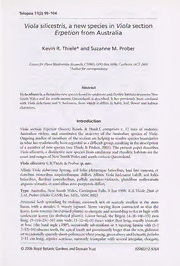
Viola silicestris, a new species in Viola section Erpetion from Australia

Solanum tergosericeum (Solanaceae: sect. Basarthrum): a new species from Peru
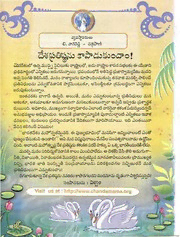
Chandamama 2006 2 Www. Rips Tracker.com

Status of the smooth greensnake (Opheodrys vernalis) in North Carolina and Virginia

Tiếng Anh - Kỹ thuật đóng tàu (English for Shipbuilding)
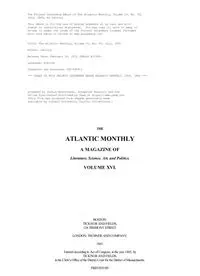
The Atlantic Monthly Volume 16 No 93 July 1865
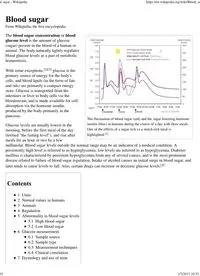
Blood sugar-2017

Las controversias alrededor de las mejores practicas - "Best Practices"

Vade mecum da jurisprudência: dizer o direito 2020

Calvary North Adelaide Ward Extension

Jack Sheppard Vol II by W Harrison Ainsworth
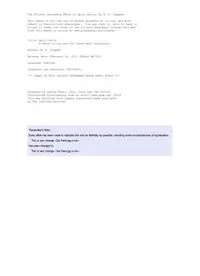
April Fools by W F Chapman

Argued: August 29, 2017 Decided: February 13, 2018

Ladda ner som PDF-dokument
